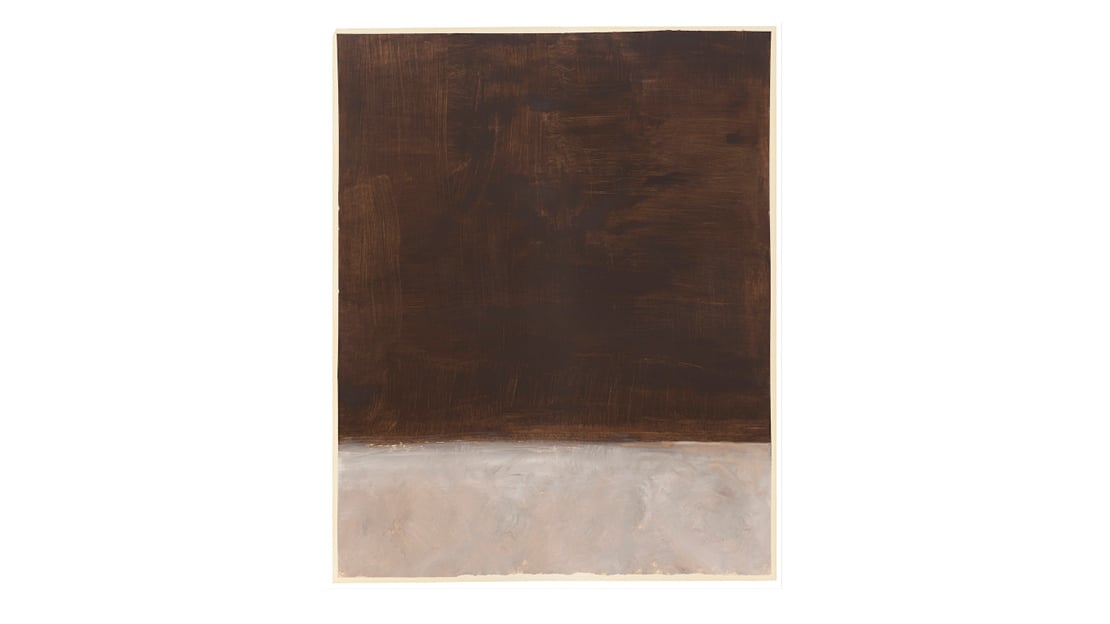Untitled
Mark Rothko
Transcription
Narrator:
Towards the end of his life, Rothko reduces and darkens his palette in many of his paintings. Such as in this painting, which belongs to a series called Brown and Grays.
Øystein Ustvedt:
Unlike before, the works now operate with a kind of horizon, and they are framed by a clear, white outer edge.
Narrator:
This is Øystein Ustvedt, art historian at the National Museum.
Øystein Ustvedt:
Rothko was unsure about his new, darker works, and he invited a number of friends and colleagues to his studio to get their response. Many reacted with astonishment and were predominantly negative. They linked the expression to the artist's vulnerable health situation and his periods of depression, heart attacks and separation from his wife. This was heightened even more so, after Rothko's dramatic suicide sometime later, where these works have been understood in the light of his critical health and vulnerable life situation.
Narrator:
But there are also other ways of understanding the radical reduction of colours and shapes in Rothko's later works.
Øystein Ustvedt:
Throughout the 1960s, he experienced great success. He becomes his generation's leading "painter in colour" and in a way that perhaps seems to undermine the seriousness and the deep, existential ambitions that he has always held up as the motivating factor for his paintings.
Narrator:
In 1964, Rothko also began work on what was to become the Rothko Chapel in Houston, Texas, in the USA: a separate chapel with a number of dark paintings in gigantic formats.
Øystein Ustvedt:
The project was commissioned by the art collectors Dominique and John de Menil, and Rothko developed the project in close collaboration with them. The couple were Catholic, but the chapel (and the room) was designed without any form of religious anchoring. It became a place for meditation and contemplation for anyone and everyone.
Narrator:
Rothko had always dreamed of a separate room for his paintings, and here it happened on a large scale. Unfortunately, the chapel wasn’t finished until after his death.
Today, the chapel remains a cultural attraction in Houston.